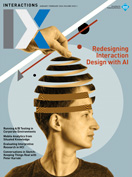Authors:
Miriam Sturdee
Text Version
I’m waiting nervously for my Teams call with Peter Kariuki to start, mainly because this is the first official Conversations in Sketch Interview, but also because I am excited to meet him, having seen the CHI keynote. I am sitting in my office at the University of St Andrews, and Autumn is closing in.
I needn’t have worried. Peter is instantly engaged, smiling and I ask if he minds if I scribble notes. I lift up my sketchbook. “Great to meet you! Do you mind if I take notes while we chat?”
“Not at all… Oh! is that a sketchbook?”
We instantly start chatting about sketching and notetaking, and I frantically scribble down notes in a scrawl that I hope I can read again later.
“When my thoughts are taking form, they often go into the background of my mind and disappear. Then the bell rings again and I think, I must write it down!”
I realize this interview is going to be a lot more than just asking questions about SafeMotos, his amazing start-up we learned about at CHI.
“I love my notebook. It’s where I record details and moments of inspiration,” Peter continues, me still scribbling down notes and quotes as fast as I can.
I ask if he sketches… of course he does!
“I also sketch. With sketching you can bring together layers; having something alongside the notes makes it easy to reason. It’s a form of offloading from the brain—a sketchbook is a useful tool!”
I ask if he used sketches and notes for his SafeMotos project.
“With SafeMotos there were many challenges. It required abstract thinking. I sketched it out in various iterations. Then we met with the riders and investors—it is important to step away from the laptop and interact!”
I ask more about the sketches (obviously I am obsessed with sketching and HCI!)
He says: “There is something special about our hands, which we extend to touch and feel in the real world. It is good to [also] think abstractly—a blank canvas is stressful! But when you work through it, you always arrive somewhere beautiful! It is more real—more human—to draw and think than type.”
We continue to chat, touching upon process and methods. My two pages of notes in my sketchbook expand to four, little doodles accompanying them. We speak on creativity.
“Creative people can sit and imagine, but when there is touch—feeling—it is more sensory. There is emotional capital. Digging deep is easier if it is real.”
This is wonderful stuff. I wanted to make sure that the interviews also reflect on the method we are using to illustrate them, to layer up the meaning and importance of the tangible and visual aspects of HCI and related fields.
I ask next: “Is there anything new you can share with me?”
Peter thinks for a moment, choosing a project that is already in motion, and will not affect any work yet to be done.
“In Africa, medical records, from consultations to vaccination counts, are often created with pen and paper. I thought: Could we figure this out? We are looking into computer vision, working with a standardized form to extract meaningful information. We’ve launched in Somaliland and used it for vaccination records.”
We continue to chat. I lament about AI illustrations and how it affects the livelihoods of those working in the arts. Peter reflects, and considers the role of technology and AI.
“Imagine if AI was a helper, not a competitor. I’m optimistic that we will get to a point where we spend more time on imaginative thinking than on menial tasks. Then, even advanced tech becomes a tool—and all we really want is to be with our families and be happy. If we imagine creatively, we can influence positive change.”
We wrap up the interview, and I promise to send sketches and notes. Peter later also shares some of his sketches from the SafeMotos project, which I reproduce for the comics page. I have about eight pages of notes and doodles, and I can’t wait to sketch up the conversation.
Miriam Sturdee is a lecturer at the University of St Andrews working on intersections of art, design, and computer science. She is a practicing artist and designer and has an MFA in visual communication. Her publications explore areas of futuring, sketching and drawing, alternative research outputs, and psychology. [email protected]
Copyright held by author
The Digital Library is published by the Association for Computing Machinery. Copyright © 2024 ACM, Inc.










Post Comment
No Comments Found